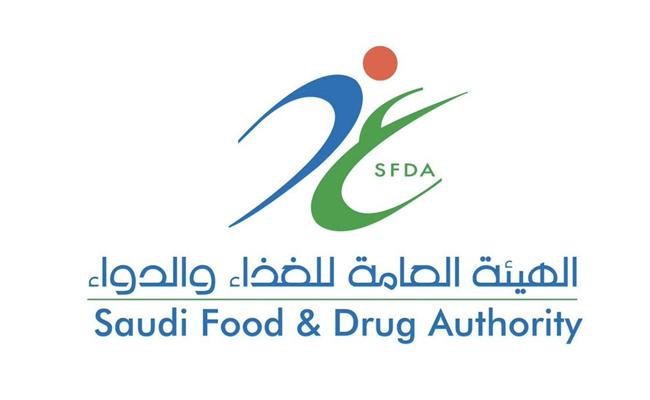
Information for Healthcare Professionals: OnabotulinumtoxinA (marketed as Botox/Botox Cosmetic),
Information for Healthcare Professionals: OnabotulinumtoxinA (marketed as Botox/Botox Cosmetic),
Information for Healthcare Professionals: OnabotulinumtoxinA (marketed as Botox/Botox Cosmetic),
2009-09-06
Information for Healthcare Professionals: OnabotulinumtoxinA (marketed as Botox/Botox Cosmetic), AbobotulinumtoxinA (marketed as Dysport) and RimabotulinumtoxinB (marketed as Myobloc)
The U.S. Food and Drug Administration, the American counterpart to the Saudi Food
and Drug Authority (SFDA), (as announced on April 30, 2009, based on a safety evaluation of the botulinum toxin products) has concluded that the prescribing information for OnabotulinumtoxinA (marketed as Botox/Botox Cosmetic) and RimabotulinumtoxinB (marketed as Myobloc) must be updated to ensure their continued safe use. On July 31, 2009, FDA, under the authorities granted by the Food and Drug Administration Amendments Act (FDAAA) of 2007, approved the following revisions to the prescribing information of Botox/Botox Cosmetic and Myobloc:
A Boxed Warning highlighting the possibility of experiencing potentially life-threatening distant spread of toxin effect from the injection site after local injection.
A Risk Evaluation and Mitigation Strategy (REMS) that includes a Medication Guide to help patients understand the risks and benefits of botulinum toxin products.
Changes to the established drug names to reinforce individual potencies and prevent medication errors. The potency units are specific to each botulinum toxin product, and the doses or units of biological activity cannot be compared or converted from one product to any other botulinum toxin product. The new established names reinforce these differences and the lack of interchangeability among products.
The other botulinum toxin product in this class, AbobotulinumtoxinA (marketed as Dysport), was approved on April 29, 2009 and included the Boxed Warning, REMS, and new established name at the time of approval.
The following table lists the established name changes and the approved indications for each product. The marketed trade names and the product formulations have not changed for these products.
|
Summary of FDA-Approved Botulinum Toxin Products | |||
|
Trade Name* |
NEW Drug Name |
OLD Drug Name |
Indication |
|
Botox |
OnabotulinumtoxinA |
Botulinum toxin type A |
Cervical dystonia, Severe primary axillary hyperhidrosis, Strabismus, Blepharospasm |
|
Botox Cosmetic |
OnabotulinumtoxinA |
Botulinum toxin type A |
Temporary improvement in the appearance of moderate to severe glabellar lines |
|
Dysport |
AbobotulinumtoxinA |
Botulinum toxin type A |
Cervical dystonia, Temporary improvement in the appearance to moderate to severe glabellar lines |
|
Myobloc |
RimabotulinumtoxinB |
Botulinum toxin type B |
Cervical dystonia |
|
* The marketed trade names and the product formulations have not changed. | |||
|
Saudi Arabia Approved Botulinum Toxin Products | |||
|
Trade Name |
Genric Name |
Dosage form |
Producer |
|
Botox |
Botulinum toxin type A |
100 units / vail for IM Use |
Allergam Pharmaceutical LTD Ireland |
Considerations for Health Care Professionals
Be aware that a Boxed Warning has been added to the prescribing information to highlight that botulinum toxin may spread from the area of injection to produce symptoms consistent with botulism. Symptoms such as unexpected loss of strength or muscle weakness, hoarseness or trouble talking (dysphonia), trouble saying words clearly (dysarthria), loss of bladder control, trouble breathing, trouble swallowing, double vision, blurred vision and drooping eyelids may occur.
Understand that swallowing and breathing difficulties can be life-threatening and there have been reports of deaths related to the effects of spread of botulinum toxin.
Be aware that children treated for spasticity are at greatest risk for these symptoms, but symptoms can also occur in adults treated for spasticity and other conditions.
Be aware that cases of toxin spread have occurred at botulinum toxin doses comparable to those used to treat cervical dystonia and at lower doses.
Be aware that no definitive serious adverse event reports of distant spread of toxin effect have been associated with dermatologic use of Botox/Botox Cosmetic at approved doses.
Be aware that no definitive serious adverse event reports of distant spread of toxin effect have been associated with Botox for blepharospasm or for strabismus at approved doses.
Understand that the established drug names of the botulinum products have been changed to emphasize the differing dose to potency ratios of these products.
Understand that botulinum toxin products are not interchangeable.
Be aware that all botulinum toxin products have a Medication Guide and urge patients, their families, and caregivers to review it carefully.
Understand that clinical doses expressed in units are not comparable from one botulinum toxin product to the next. Units of one product cannot be converted into units of another product.
Information for patients, family members, and caregivers:
Review the Medication Guide accompanying botulinum toxin products.
Discuss any concerns you may have about the risks and benefits of these products with a health care professional.
Pay close attention for any signs or symptoms of adverse events. Seek immediate medical attention if you have unexpected difficulty swallowing or talking, trouble breathing, or muscle weakness following treatment with a botulinum toxin product.
Understand that side effects may occur within hours of an injection or as late as several weeks after treatment.
Understand that botulinum toxin products differ from one another in dose units, names, and dosing and are NOT interchangeable.
The SFDA urges both healthcare professionals and patients to report side effects from the use of botulinum toxin products to the SFDA either online, by regular mail or by fax, using the following contact information :
National Pharmacovigilance Center (NPC)
Saudi Food and Drug Authority-Drug sector
3292 Northern Ring Road
Al Nafal District
Riyadh 13312 – 6288
Kingdom of Saudi Arabia
Email :
Website:
Resorce:



